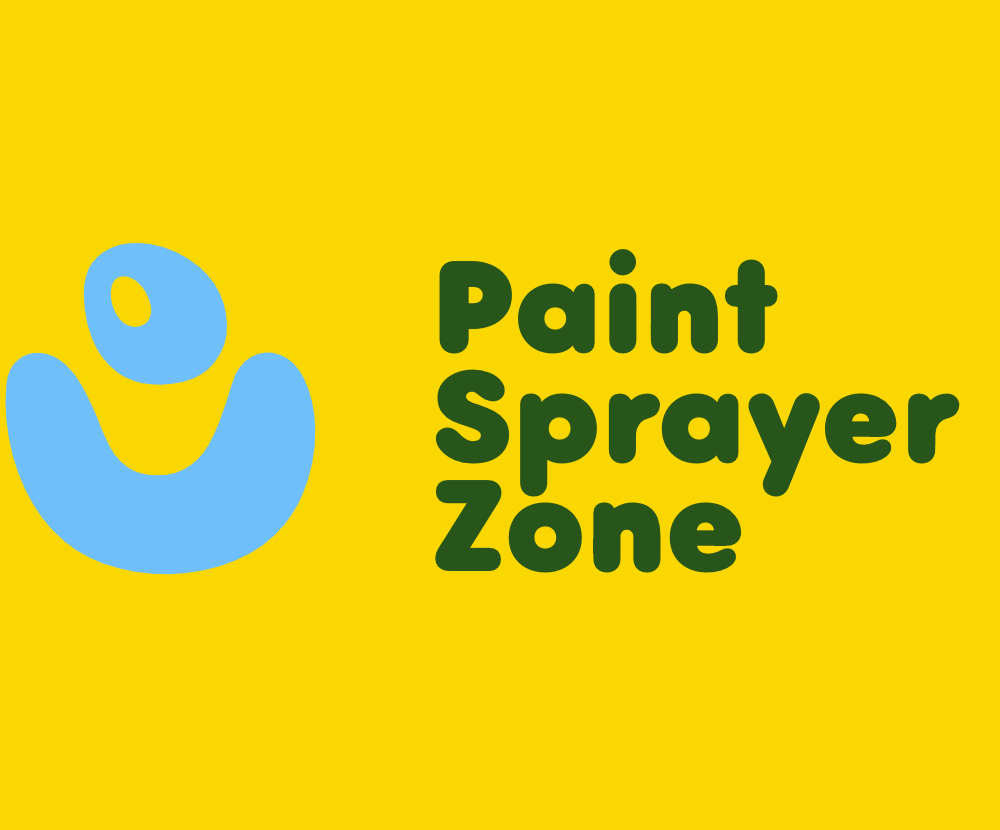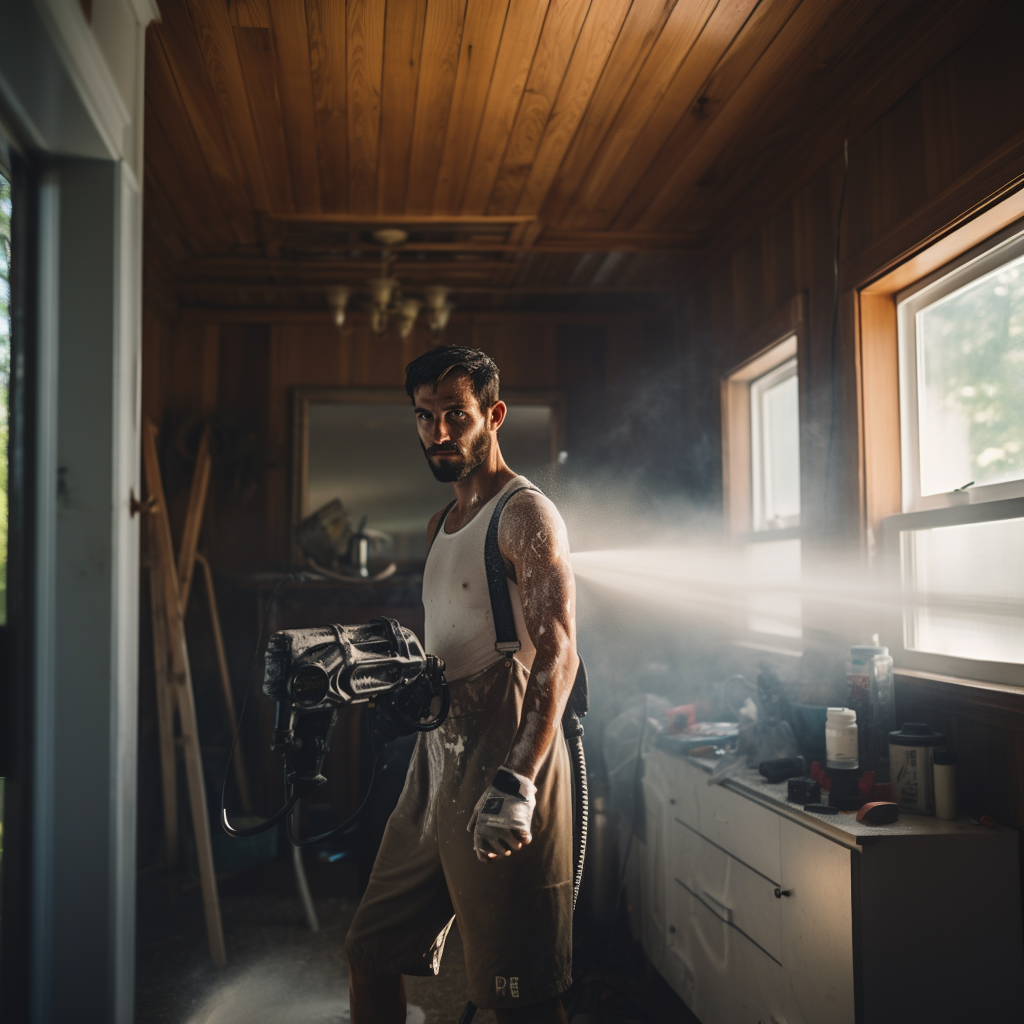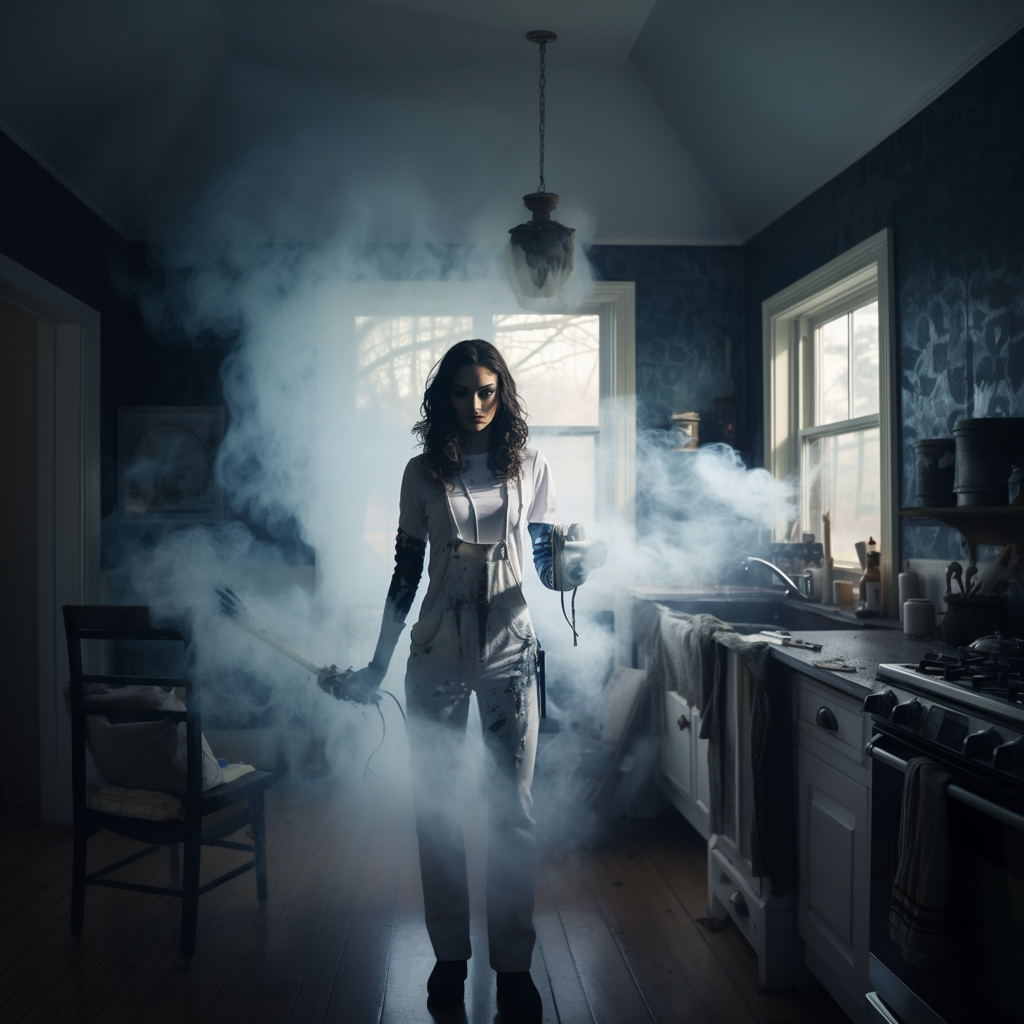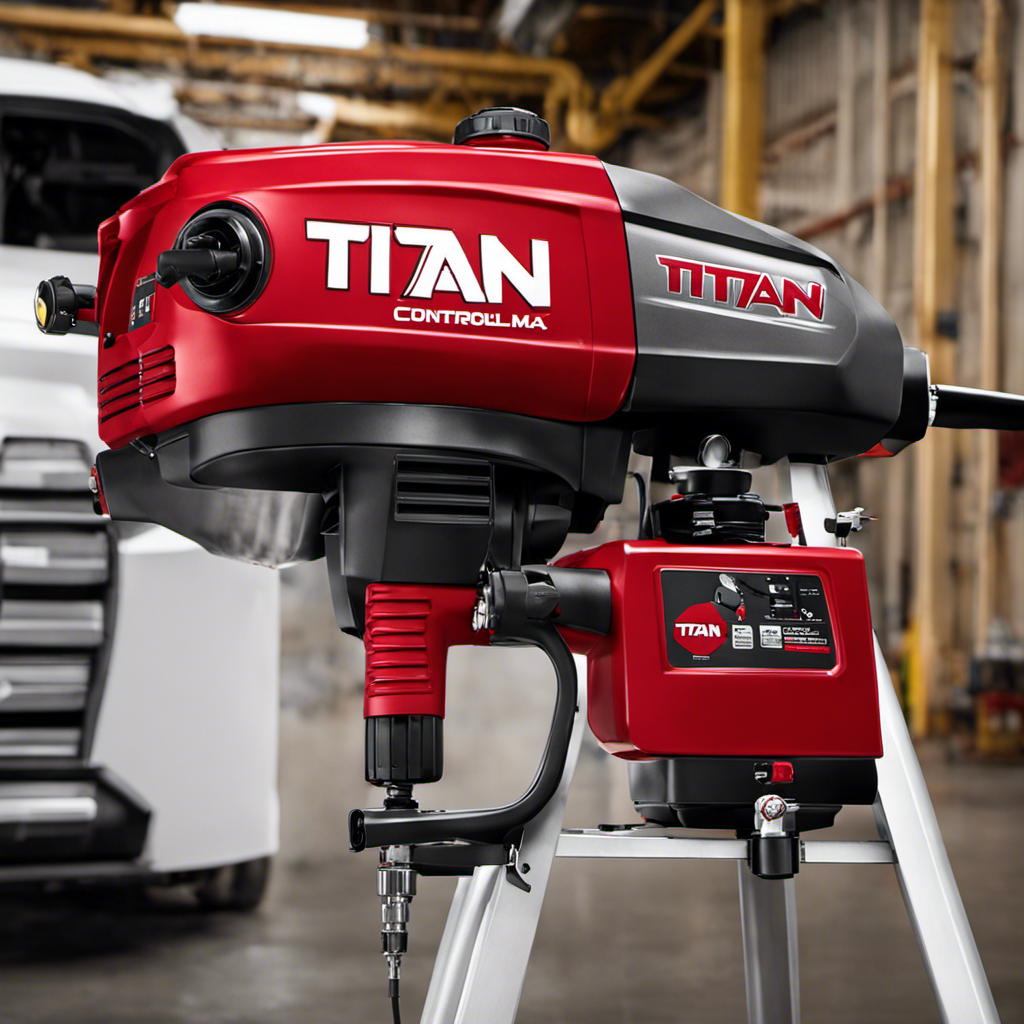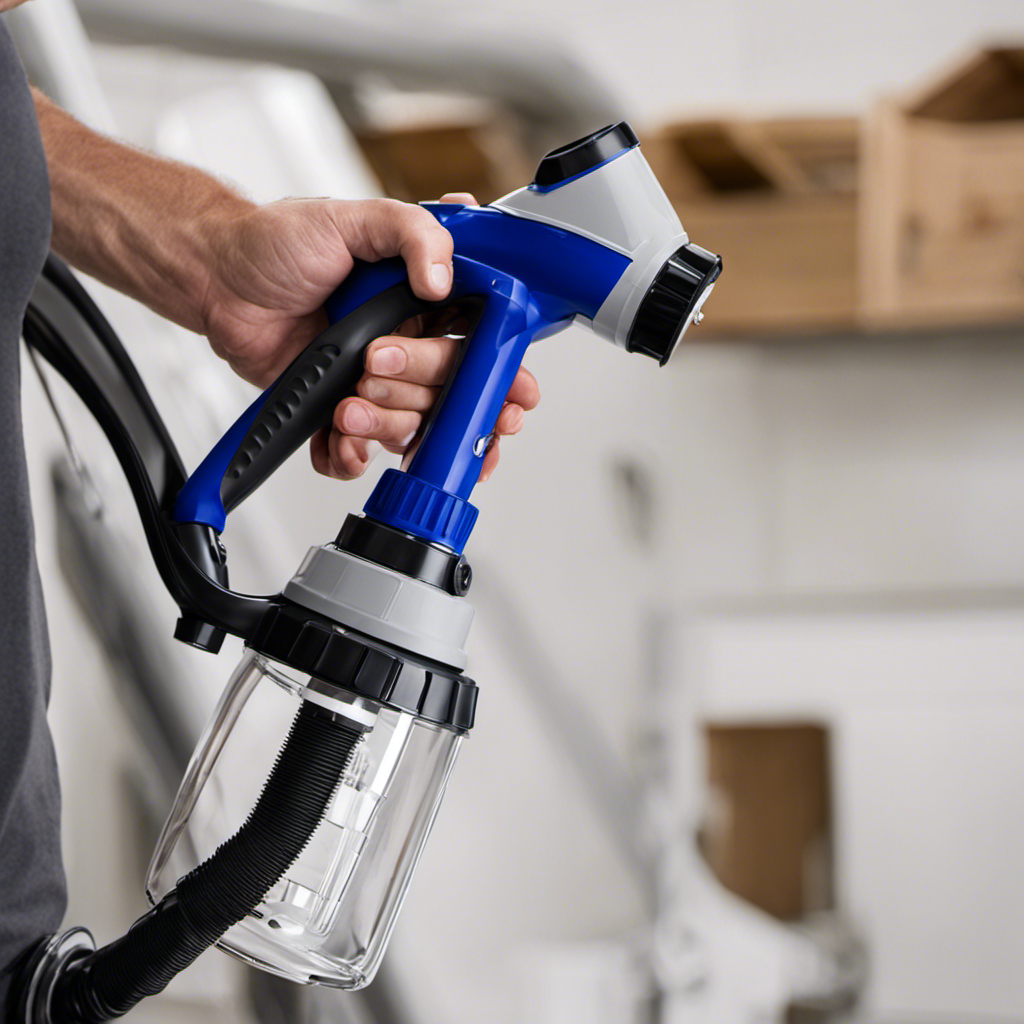Paint Sprayer Maintenance and Troubleshooting
Mastering Wall Painting With an Airless Sprayer
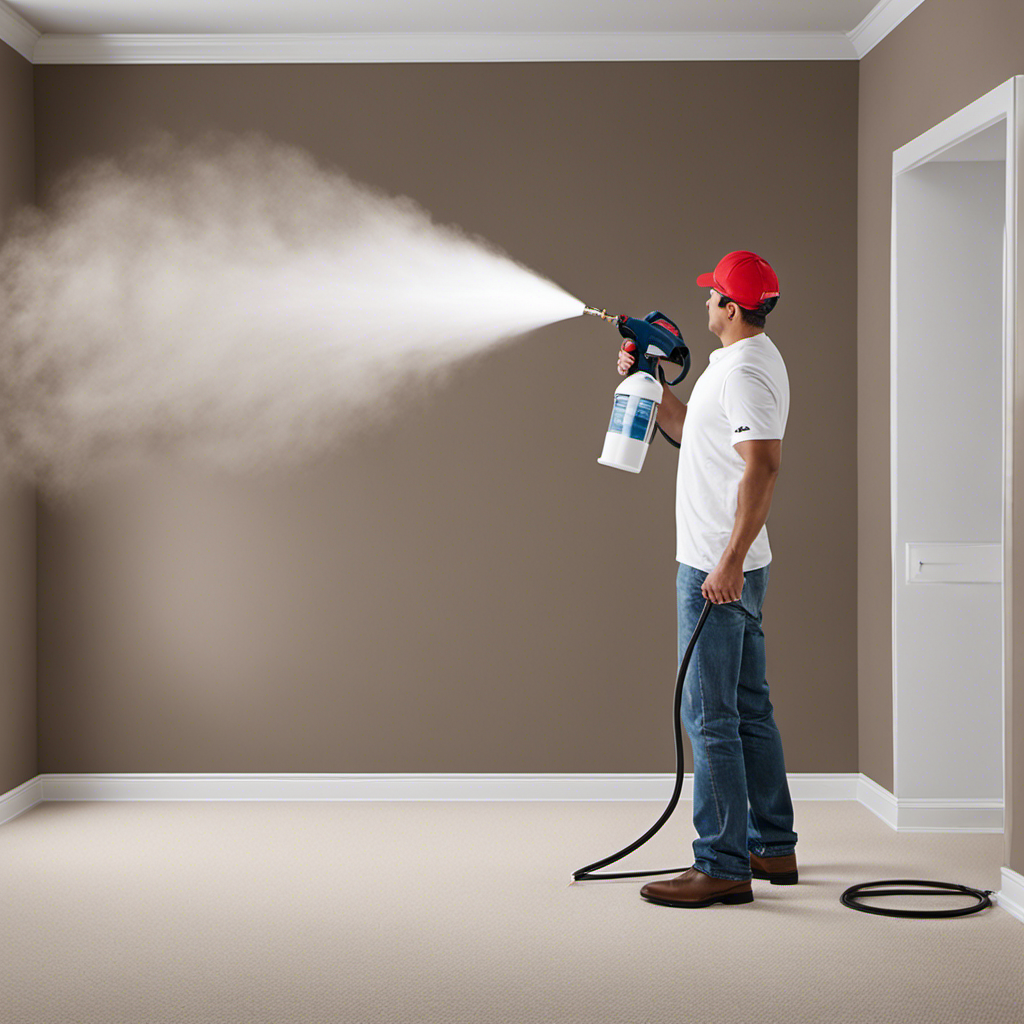
Mastering the use of an airless paint sprayer for painting walls can significantly increase efficiency and create professional-looking results. Research has demonstrated that utilizing an airless sprayer can result in finishes being completed up to 10 times faster compared to using a brush and roller.
This article will provide a comprehensive guide on how to prepare the surface, choose the right paint, set up and test the sprayer, and achieve flawless painting techniques.
With these tips, anyone can become a wall painting expert with an airless sprayer.
Key Takeaways
- Properly preparing the surface is crucial for a successful wall painting with an airless sprayer. This includes cleaning the wall, filling cracks or holes, applying a primer, and choosing the right paint.
- Setting up and testing the airless sprayer is important to ensure its proper functioning. This involves assembling the sprayer, priming it, addressing any setup issues, and testing it before starting the painting process.
- Mastering proper painting techniques is essential for achieving a smooth and even finish. This includes holding the sprayer perpendicular to the wall, using whole arm movements, maintaining a steady speed, and adjusting pressure settings if needed.
- Managing overspray and drips is necessary to prevent paint from spreading to unwanted areas. This can be done by preparing the painting area, using the nozzle adjustment feature, and maintaining a consistent distance from the wall surface.
Preparing the Surface and Choosing Paint and Equipment
The painter cleans the wall thoroughly using a mild detergent and water solution to remove dirt, dust, or grease. After ensuring the surface is clean, they fill any cracks or holes and sand the wall for a smooth finish.
Applying a primer with a roller or brush is the next step, following the manufacturer’s instructions.
When it comes to selecting the paint, the painter considers different colors to achieve the desired aesthetic. They also take into account the right paint finish for the final look and durability.
Cleaning the Wall Thoroughly
To ensure a clean surface, the user should thoroughly wash the wall with a mild detergent and water solution, removing any dirt, dust, or grease. This step is essential for achieving a smooth and flawless paint finish.
For tough stains on walls, it is advisable to use a stain-specific cleaner or a mixture of baking soda and water to target and remove the stains. It is important to follow the instructions provided by the cleaner manufacturer and test it on a small, inconspicuous area of the wall before applying it to the entire surface.
Additionally, to prevent paint drips and splatters, it is recommended to use a high-quality paintbrush or roller and apply the paint in even strokes, using steady and consistent pressure. Covering nearby furniture and surfaces with drop cloths or plastic sheets can also help minimize the risk of accidental splatters.
Filling Cracks and Holes
After thoroughly cleaning the wall, the user should fill any cracks or holes with a suitable filler and sand the surface to create a smooth base for painting.
Repairing cracks and holes is essential to ensure a flawless finish. The user should carefully apply the filler, making sure to completely fill the damaged areas. Once the filler has dried, sanding the surface is necessary to create a smooth and even surface for painting.
Using sandpaper or a sanding block, gently sand the filled areas until they are flush with the surrounding wall. This step helps to blend the repaired areas seamlessly with the rest of the wall.
After completing these steps, the wall is now ready for the next stage of the painting process.
Applying Primer
Before starting the painting process, it is important for the user to apply a primer to the wall, following the manufacturer’s instructions. Applying primer serves several purposes such as enhancing paint adhesion, sealing porous surfaces, and providing a uniform base for the paint.
There are different types of primer available, including oil-based, water-based, and shellac-based, each with its own specific uses and benefits.
When applying primer, it is essential to avoid common mistakes such as using an insufficient amount of primer, not allowing sufficient drying time, or failing to properly clean and prepare the surface beforehand.
Selecting the Right Paint
The user should carefully consider the compatibility of the paint with the surface and the airless sprayer before making a selection.
When choosing paint colors for their project, it is important to take into account the desired aesthetic and the overall theme or mood they want to achieve.
Different paint finishes, such as flat, eggshell, satin, or semi-gloss, can also affect the final look and durability of the painted surface.
Flat finishes are ideal for hiding imperfections, while glossy finishes offer a more durable and easily cleanable surface.
Eggshell and satin finishes provide a balance between durability and a smooth, low-sheen appearance.
Setting Up the Airless Sprayer
To properly set up the airless sprayer, the user should carefully assemble the equipment according to the manufacturer’s instructions and ensure all connections are secure. This will help avoid common mistakes and ensure a smooth painting process.
Here are some tips and tricks for beginners to set up the airless sprayer correctly:
- Take the time to read and understand the manufacturer’s instructions before assembling the sprayer.
- Double-check that all connections are tight and secure to prevent any leaks or malfunctions during painting.
- Prime the sprayer with water before starting to remove any air bubbles and ensure proper functionality.
Priming the Sprayer
After assembling the equipment, the user should ensure that the sprayer is primed with water to remove any air bubbles and ensure proper functionality. Priming the sprayer is an essential step in preparing for wall painting with an airless sprayer.
By filling the sprayer with water and running it for a few minutes, any air bubbles can be eliminated, preventing potential issues during the painting process. Troubleshooting sprayer issues is crucial during setup, including addressing leaks or clogs.
Additionally, choosing a suitable filler is important for achieving a smooth surface before painting. By filling cracks or holes with an appropriate filler and sanding the wall, the user can create the ideal foundation for a flawless paint job.
Troubleshooting Setup Issues
After priming the sprayer, it’s important to address any setup issues that may arise before starting the painting process. Troubleshooting leaks and addressing clogs are common problems that can occur with airless sprayers. Here are some steps to help you troubleshoot and resolve these issues:
- Check all connections: Ensure that all connections are secure and tight to prevent leaks from occurring.
- Inspect the hose and fittings: Look for any visible cracks or damage that may be causing leaks and replace any faulty components.
- Clean the nozzle: Clogs in the nozzle can cause uneven spray or splattering. Remove the nozzle and clean it thoroughly using a brush or solvent.
- Clear the filters: Filters can become clogged with paint debris, leading to poor spray performance. Remove and clean the filters regularly to maintain optimal function.
Testing the Sprayer
The user should assemble the sprayer according to the manufacturer’s instructions and ensure all connections are secure when testing the equipment. After setup, it is essential to test the sprayer to ensure it is working correctly before starting the painting process. This not only helps identify any potential issues but also ensures a smooth and efficient painting experience. To assist in troubleshooting and maintenance, the following table provides a concise overview of common sprayer issues and their possible solutions:
| Issue | Possible Solution |
|---|---|
| Leaking sprayer | Check for loose or damaged connections and tighten or replace as necessary. |
| Clogged nozzle | Remove the nozzle and clean it thoroughly to remove any clogs. |
| Uneven or streaky paint | Adjust the sprayer’s pressure settings to achieve a consistent spray pattern. |
| Dripping or splattering paint | Check the nozzle for clogs and clean if necessary. |
| Inconsistent spray pattern | Inspect the sprayer for worn or damaged parts and replace as needed. |
Holding the Sprayer Correctly
To achieve an even and consistent spray pattern, the user should hold the sprayer perpendicular to the surface and maintain a steady distance of about 12 inches. This ensures that the paint is applied evenly and prevents any streaks or uneven coverage.
In addition to the proper grip and spray distance, it is important to move the whole arm, not just the wrist, to create smooth, overlapping passes. This technique helps to avoid any drips or uneven application.
Maintaining a steady, consistent speed is also crucial in achieving a professional-looking finish.
Using Proper Painting Techniques
Using smooth, overlapping passes and maintaining a steady speed, the user can achieve an even and professional-looking paint job on their walls. These proper painting techniques not only improve efficiency but also ensure a professional finish.
By moving the whole arm and not just the wrist, the user can create smooth, consistent strokes that cover the surface evenly. Maintaining a steady speed helps prevent drips or uneven application of paint. Additionally, adjusting the sprayer’s pressure settings and checking the nozzle for clogs can help address any issues with paint consistency.
Overlapping each pass by 50% ensures that no spots are missed. By following these techniques, the user can achieve a high-quality, professional result while painting their walls.
Adjusting Sprayer Pressure Settings
Adjusting the pressure settings on the sprayer ensures a consistent and smooth application of paint. By understanding how to properly adjust the sprayer’s pressure, painters can achieve optimal results on different surfaces and troubleshoot any issues with paint streaks.
Here are some key points to consider:
-
Adjusting sprayer pressure for different surfaces: Different surfaces require different pressure settings for the paint to adhere properly. By adjusting the pressure according to the surface being painted, such as walls, ceilings, or furniture, painters can achieve an even coat without streaks or drips.
-
Troubleshooting paint streaks: If paint streaks occur during the application process, adjusting the sprayer’s pressure settings can help alleviate the issue. Lowering the pressure can reduce the likelihood of streaks, while increasing the pressure can help if the paint is not adhering properly.
Checking for Nozzle Clogs
Inspecting the nozzle for clogs is essential to ensure a smooth and uninterrupted paint flow. To prevent nozzle clogs during wall painting, there are a few techniques that can be used.
First, it is important to strain the paint before pouring it into the sprayer to remove any impurities that could cause clogs. Additionally, regularly cleaning the sprayer and the nozzle with water or solvent can help prevent buildup and blockages.
If a clog does occur, there are techniques for unclogging a paint sprayer nozzle. One method is to remove the nozzle and soak it in a cleaning solution to dissolve any dried paint. Another technique is to use a small brush or toothpick to carefully remove any clogs from the nozzle.
Managing Overspray and Drips
To manage overspray and drips, the painter can cover nearby furniture and objects with drop cloths or plastic sheets. This will prevent paint splatter and avoid paint runs, ensuring a clean and professional finish.
Additionally, using the nozzle adjustment feature on the sprayer allows the painter to change the width and shape of the spray pattern, further reducing the risk of overspray.
Holding the sprayer nozzle at a consistent distance from the wall surface also helps control the spray and minimize drips.
Cleaning and Maintaining the Sprayer
After mastering the techniques of managing overspray and drips, it is important to focus on cleaning and maintaining the sprayer. Regular maintenance is crucial to ensure the longevity and optimal performance of the equipment.
Cleaning the sprayer thoroughly after each use is essential. Flushing out any leftover paint or debris with clean water or solvent helps to prevent clogs and issues with the spray pattern.
Paying close attention to the nozzle and filters is also important. Removing any obstructions or buildup from these areas ensures the sprayer continues to produce a consistent spray pattern.
Additionally, it can be challenging to clean hard-to-reach areas of the sprayer. One tip is to use a small brush or toothbrush to scrub these areas.
Regular maintenance and cleaning will help keep the sprayer in good condition and ready for future use.
Frequently Asked Questions
How Long Does It Take for the Primer to Dry Before Applying Paint?
The drying time for the primer before applying paint can vary depending on factors such as temperature and humidity. It is generally recommended to wait at least 24 hours for the primer to dry completely. This allows for proper adhesion of the paint and ensures a smooth, long-lasting finish.
It’s important to follow the manufacturer’s instructions for drying times and to use proper applying techniques to achieve the best results.
Can I Use the Same Airless Sprayer for Different Types of Paint?
Yes, the same airless sprayer can be used for different types of paint. However, it is important to choose the right paint type that is compatible with the airless sprayer.
Different paints have different viscosities, so it is essential to select a paint that can be sprayed effectively through the sprayer.
Additionally, proper maintenance of the airless sprayer is necessary to ensure optimal performance. Regularly cleaning the sprayer and inspecting for any worn or damaged parts will help maintain its functionality.
What Safety Precautions Should I Take When Using an Airless Sprayer?
When using an airless sprayer, it’s important to take proper safety precautions. Always wear appropriate safety gear, such as goggles, gloves, and a respirator, to protect yourself from paint fumes and potential overspray.
Additionally, ensure that you are working in a well-ventilated area to minimize exposure to fumes. These safety measures will help protect your health and ensure a safe painting experience.
Is It Necessary to Sand the Wall Before Applying Primer?
Sanding the wall before applying primer is necessary for achieving a smooth surface. It helps to remove any imperfections, such as bumps or uneven areas, allowing the primer to adhere properly. Sanding also promotes better paint adhesion, ensuring a long-lasting and professional finish.
Using primer before painting offers several benefits. It improves paint coverage, enhances color accuracy, and increases durability. Primer creates a stable base for the paint, seals the surface, and helps to prevent stains and peeling.
How Often Should I Clean the Sprayer’s Filters?
Cleaning the sprayer’s filters is an essential part of its maintenance. To ensure optimal performance, the filters should be cleaned regularly. The cleaning frequency will depend on factors such as the type of paint used and the frequency of use. However, as a general guideline, it is recommended to clean the sprayer’s filters after every use or at least once a week.
Regularly inspecting and cleaning the filters will help prevent clogs and maintain the spray pattern.
Conclusion
In conclusion, mastering wall painting with an airless sprayer is like conducting a symphony. Just as a skilled conductor brings together different instruments to create a harmonious melody, a painter must prepare the surface, choose the right paint, and set up the sprayer with precision.
Like a painter’s brush, the sprayer must be held with finesse and the right technique to achieve flawless results. Managing overspray and maintaining the sprayer’s cleanliness are akin to maintaining a well-tuned instrument.
With practice and attention to detail, anyone can master the art of wall painting with an airless sprayer and create a masterpiece in their home.
Franz came aboard the Paint Sprayer Zone team with a background in both journalism and home renovation. His articulate writing style, combined with a passion for DIY projects, makes him an invaluable asset. Franz has a knack for breaking down technical jargon into easy-to-understand content, ensuring that even the most novice of readers can grasp the complexities of paint sprayers.
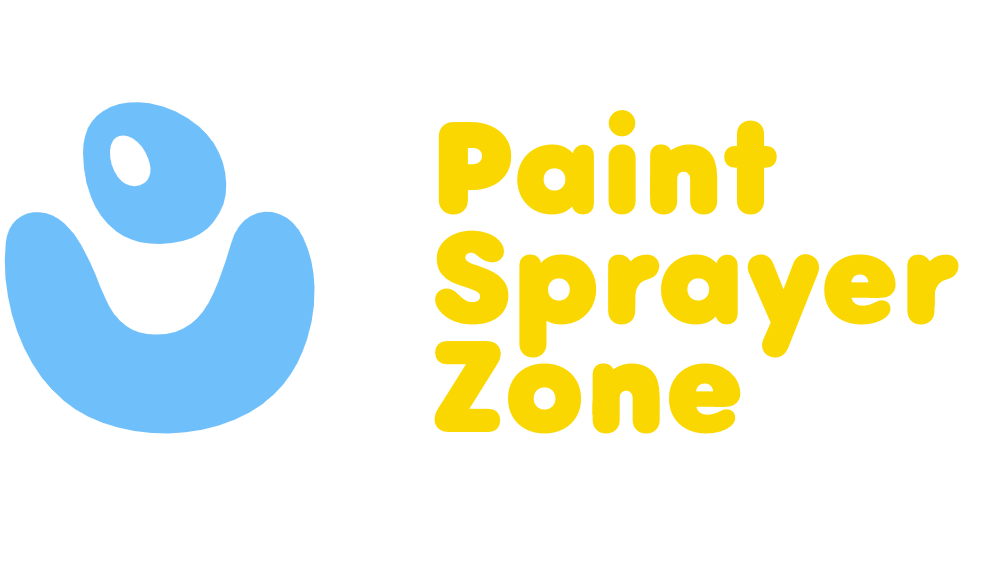
Paint Sprayer Maintenance and Troubleshooting
Maintaining and Achieving Optimal Paint Consistency for Airless Sprayer Hose

In a world where achieving a flawless paint finish is a true sign of professional skill, it is crucial to achieve the correct paint consistency for use in an airless sprayer hose.
The secret lies in a combination of proper maintenance, correct paint viscosity, and effective spraying techniques.
By regularly checking and replacing the sprayer hose, cleaning and storing the sprayer correctly, adjusting paint viscosity, using a filter or strainer, and mastering the correct spraying techniques, one can achieve a high-quality, streak-free finish.
Get ready to elevate your painting game and leave no room for imperfection.
Key Takeaways
- Regularly check the hose for wear or damage and replace if necessary.
- Clean the hose and inspect for leaks or cracks.
- Achieving the right paint consistency ensures smooth flow and prevents clogs.
- Properly store the sprayer in a clean, dry place away from direct sunlight and extreme temperatures.
Regularly Checking and Replacing the Sprayer Hose
The user should regularly check the sprayer hose for wear or damage and replace it if necessary. Preventing hose wear is crucial for maintaining the optimal performance of an airless sprayer.
Choosing the right hose material is equally important, as it affects the durability and flexibility of the hose. High-quality materials like polyurethane or nylon are recommended for their resistance to abrasion and chemicals. These materials can withstand the high pressure and constant movement involved in spraying paint.
It is essential to consider the type of paint being used and the specific requirements of the job when selecting the hose material.
Proper Cleaning and Storage Techniques
Properly cleaning and storing the sprayer ensures its longevity and prevents damage. To prevent paint buildup and maintain optimal performance, it’s important to choose the right cleaning solutions.
Here are some key steps to follow:
-
Select the right cleaning solutions:
-
Use a mild detergent or specialized sprayer cleaner recommended by the manufacturer.
-
Avoid harsh chemicals that can damage the sprayer components.
-
Follow proper cleaning techniques:
-
Disassemble the sprayer and remove any remaining paint.
-
Clean the spray tip, guard, and hose using warm soapy water.
-
Use a soft brush to remove dried paint or debris.
-
Rinse the parts with clean water and let them dry before reassembling the sprayer.
Achieving the Right Paint Consistency
To ensure a smooth flow and prevent clogs, it’s important to adjust the viscosity of the paint based on its type. Adjusting paint viscosity involves adding water or a specific thinner if the paint is too thick. Conversely, if the paint is too thin, a thickening agent can be added.
Achieving the right paint consistency is crucial as it ensures optimal spray performance and prevents paint clogs in the airless sprayer hose. By adjusting the viscosity, the paint flows smoothly through the sprayer without any blockages. This not only improves the overall quality of the paint job but also prolongs the lifespan of the sprayer by reducing the risk of blockages.
Properly adjusting the paint viscosity is an essential step in achieving a professional and efficient spraying experience.
Using a Filter or Strainer for Optimal Performance
Using a filter or strainer helps remove impurities from the paint, ensuring optimal spray performance and reducing the risk of blockages in the nozzle. When choosing the right filter or strainer for your airless sprayer hose, it is important to consider the type of paint you will be using and the level of filtration required.
The benefits of using a filter or strainer in your paint spraying process include:
Improved Paint Quality:
- Removes dirt, dust, and dried paint particles, resulting in a smoother finish.
- Prevents clogs and ensures consistent paint flow.
Extended Sprayer Lifespan:
- Reduces the risk of blockages in the nozzle, which can lead to damage and costly repairs.
- Prolongs the lifespan of the sprayer by preventing build-up of paint residue.
Mastering the Correct Spraying Techniques
The sprayer operator should take breaks and rest their arm to avoid fatigue while mastering the correct spraying techniques. This is crucial in preventing paint splattering and minimizing overspray.
To achieve a smooth and controlled spray pattern, the operator must maintain a consistent spraying distance and use the correct nozzle size for the paint and surface. Regularly flushing the sprayer system helps remove built-up paint residue, ensuring optimal performance.
It is important to note that nozzle size determines the spray pattern and flow rate, ultimately affecting the overall quality of the paint job. Different nozzle sizes are suitable for different paint and surface types, so it is essential to choose the appropriate one.
Maintaining and Extending the Lifespan of the Sprayer Hose
Regularly inspecting for wear or damage and promptly replacing if necessary helps maintain and extend the lifespan of the sprayer hose. To prevent hose damage and troubleshoot hose leaks, there are several key steps to follow:
- Ensure proper installation and secure connections to prevent leaks.
- Regularly clean the hose and inspect for any signs of wear, such as cracks or bulges.
- Avoid exposing the hose to extreme temperatures or harsh chemicals that can cause deterioration.
- Use caution when moving the sprayer to prevent bending or kinking the hose.
- Store the sprayer in a cool, dry place when not in use and relieve pressure in the hose.
- If a leak is detected, determine the source and repair or replace the affected section promptly.
Frequently Asked Questions
What Are Some Common Causes of Paint Clogs in the Sprayer Hose?
Common causes of paint clogs in the sprayer hose include using paint with improper viscosity, not properly cleaning the sprayer after each use, and failing to use a filter or strainer to remove debris from the paint.
To prevent paint clogs, it is important to adjust the viscosity of the paint, thoroughly clean the sprayer after each use, and use a filter or strainer to remove impurities.
These preventative measures ensure optimal paint consistency and prevent blockages in the sprayer hose.
Can I Use the Same Type of Paint Thinner for All Types of Paint?
Using the correct paint thinner is crucial for achieving optimal results. Different types of paint require specific thinners to maintain the desired consistency. Using the wrong thinner can lead to issues such as uneven drying, poor adhesion, or even damage to the paint surface.
It is important to consult the manufacturer’s recommendations or seek professional advice to determine the appropriate paint thinner for your specific type of paint. Properly using the correct paint thinner ensures a smooth and successful painting experience.
How Often Should I Clean the Spray Tip and Guard?
Cleaning frequency for the spray tip and guard depends on the frequency of use and the type of paint being used. It is recommended to clean the spray tip and guard thoroughly after each use to prevent paint build-up and clogs.
Proper cleaning techniques involve using warm soapy water and a soft brush to remove dried paint or debris. Rinse the parts with clean water and let them dry before reassembling the sprayer.
What Is the Recommended Spraying Distance for Optimal Paint Coverage?
For optimal paint coverage, it is recommended to maintain a consistent spraying distance. This ensures that the paint is evenly distributed and provides a smooth finish.
By keeping the proper distance, you can achieve optimal paint coverage without overspray or uneven application. Adjusting the spraying distance is essential when working on different surfaces or using different nozzle sizes.
It’s important to find the right balance to achieve the best results in your paint job.
Are There Any Specific Safety Precautions I Should Take When Using an Airless Sprayer Hose?
When using an airless sprayer hose, it’s important to take specific safety precautions to ensure a safe and effective painting experience.
Proper maintenance for the airless sprayer hose is crucial to prevent accidents and maintain optimal performance. This includes regularly checking for wear or damage, cleaning the hose and inspecting for leaks or cracks, and properly storing the sprayer in a cool, dry place.
Following these safety guidelines will help ensure a smooth and successful painting job.
Conclusion
In conclusion, maintaining and achieving optimal paint consistency for an airless sprayer hose is crucial for a flawless finish. By regularly checking and replacing the hose, cleaning and storing the sprayer properly, adjusting paint viscosity, using a filter or strainer, and mastering the correct spraying techniques, you can ensure a paint job that will leave jaws dropping and hearts racing.
Don’t let your creativity be hindered by clogs or inconsistent paint flow. Take control of your masterpiece and let your sprayer hose be the brush that paints dreams into reality.
Drenched in creativity and armed with a fountain pen, Isolde weaves words as gracefully as a painter strokes their canvas. A writer for Paint Sprayer Zone, her passion for colors, textures, and spaces finds a harmonious blend with her profound knowledge of painting tools and techniques.
Having grown up in a family of artists, Isolde’s tryst with paints began early. While her relatives expressed themselves on canvas, Isolde found her medium in words. She dedicated herself to chronicling the world of painting, understanding the nuances of each tool, and the artistry behind every spritz of a paint sprayer.
Paint Sprayer Maintenance and Troubleshooting
Why Using the Right Oil Matters for Your Airless Paint Sprayer

When it comes to airless paint sprayers, choosing the correct oil is crucial for optimal performance and durability. Proper maintenance and storage of the oil are essential to prevent equipment malfunctions and avoid unnecessary wear and tear.
The viscosity of the oil greatly influences the spray patterns and coverage, making it vital to select the correct viscosity to avoid clogs and reduced efficiency. By adhering to manufacturers’ guidelines and ensuring regular lubrication, one can optimize their airless paint sprayer’s functioning.
Storing the oil appropriately is also crucial to prevent degradation.
Key Takeaways
- Using the right oil is crucial for optimal functioning and performance of an airless paint sprayer.
- Different types of oil are available that are specifically designed for high pressures and temperatures of airless paint sprayers.
- Viscosity of the oil affects spray patterns and coverage, so understanding viscosity is important for achieving desired results.
- Proper oil maintenance and storage, including regular checks, top-ups, and following manufacturers’ guidelines, ensures effective functioning and longevity of the sprayer.
The Importance of Using the Right Oil
Using the right oil in an airless paint sprayer is crucial for optimal performance and longevity. The role of oil in equipment malfunction cannot be understated. By using low-quality or contaminated oil, users risk clogs and decreased performance.
Regular lubrication with the appropriate oil prevents wear and tear, ensuring the sprayer functions smoothly and efficiently. Neglecting oil maintenance can lead to clogs and inconsistent spray patterns, resulting in subpar paint application.
To avoid these issues, it is important to choose the right oil for airless paint sprayers. Using the wrong oil can lead to clogs and decreased performance. Different types of oil are available that complement airless paint sprayers, providing the necessary lubrication and protection.
Proper Oil Maintenance and Storage
Proper maintenance and storage of the oil is crucial for ensuring optimal functioning of the airless paint sprayer. Preventing oil degradation and extending sprayer longevity are key objectives.
To achieve this, it is important to store oil in a cool and dry place to prevent degradation. Regularly checking and topping up oil levels is essential for optimal performance. Following the manufacturer’s guidelines for oil change intervals is also important.
It is recommended to use high-quality oil specifically designed for airless paint sprayers. This ensures proper lubrication and prevents clogs, resulting in effective functioning.
The Role of Oil in Equipment Malfunction
Improper oil maintenance can lead to equipment malfunction in airless paint sprayers. The role of oil in equipment malfunction is significant as it plays a crucial part in preventing clogs and ensuring optimal performance.
Using the wrong oil or neglecting oil maintenance can result in decreased performance and inconsistent spray patterns. Clogs can occur when the oil fails to lubricate the necessary components, leading to blockages in the sprayer system. This can cause the sprayer to malfunction and result in reduced efficiency.
To avoid these issues, it is important to use the correct oil designed for airless paint sprayers and follow the manufacturer’s recommendations for oil change intervals. Proper oil maintenance is essential for preventing clogs and ensuring consistent, reliable performance.
Regular Lubrication for Preventing Wear and Tear
Regularly lubricating the necessary components of an airless paint sprayer helps prevent wear and tear, ensuring its longevity and optimal performance. Proper oil maintenance is essential for regular maintenance, and choosing the right oil is crucial for the sprayer’s efficiency. When selecting oil for an airless paint sprayer, it is important to consider factors such as viscosity and compatibility. Different types of oil are available that complement airless paint sprayers, but it is crucial to use oil specifically designed for high pressures and temperatures. Using the wrong oil can lead to clogs and decreased performance. Regularly checking and topping up oil levels, following manufacturers’ guidelines for oil change intervals, and using high-quality oil designed for airless paint sprayers are all part of proper oil maintenance and storage. By ensuring proper lubrication and preventing clogs, the airless paint sprayer can function effectively and provide optimal results.
| Point | Details |
|---|---|
| Regular Maintenance | Regularly lubricate necessary components |
| Oil Selection | Choose oil designed for high pressures and temperatures |
| Proper Lubrication | Ensure optimal performance and prevent clogs |
The Impact of Neglecting Oil Maintenance
Neglecting proper oil maintenance and storage can have a detrimental impact on the efficiency and performance of an airless paint sprayer. The consequences of poor oil maintenance can lead to various issues that affect the overall functionality of the equipment.
Here are some key points to consider regarding the impact of oil neglect and the consequences of poor oil maintenance:
- Increased risk of equipment malfunction and breakdown
- Reduced spray quality and inconsistent patterns
- Clogging of the spray gun and nozzle
- Decreased lifespan of the airless paint sprayer
- Inefficient use of paint and increased material waste
To avoid these issues, it is crucial to prioritize oil maintenance. Regularly check and top up oil levels, follow manufacturers’ guidelines for oil change intervals, and use high-quality oil designed specifically for airless paint sprayers.
Proper oil maintenance and storage ensure optimal performance and longevity of your equipment.
Types of Oil Compatible With Airless Paint Sprayers
Different oil types specifically designed for high pressures and temperatures are compatible with airless paint sprayers. These oils are essential for ensuring optimal performance and longevity of the equipment. When it comes to airless paint sprayers, using the wrong oil can lead to clogs and decreased performance. Therefore, it is crucial to choose the right oil that complements the sprayer’s requirements.
Viscosity plays a significant role in sprayer performance, affecting how easily the paint flows and influencing spray patterns and coverage. Different paint formulations have varying viscosities, and temperature also affects viscosity. By understanding viscosity and using the correct oil, users can achieve optimal spray patterns and coverage.
It is important to follow the manufacturer’s recommendations and choose the appropriate oil to prevent clogging and maintain efficiency.
Avoiding Clogs and Decreased Performance
To prevent clogs and maintain optimal performance, users should ensure proper lubrication and follow the manufacturer’s guidelines for oil change intervals.
Neglecting oil maintenance can lead to clogs and decreased performance, resulting in inconsistent spray patterns and reduced efficiency.
By using the correct oil viscosity, users can avoid clogs and improve spray quality. Choosing the right viscosity is crucial, as using the wrong viscosity can lead to clogging and reduced efficiency.
Additionally, high-quality oil with the right additives enhances sprayer longevity and ensures optimal performance.
Proper oil maintenance and storage are essential for preventing clogs and maintaining effective functioning. Regularly checking and topping up oil levels, storing oil in a cool, dry place, and using high-quality oil designed for airless paint sprayers are all important steps in avoiding clogs and improving spray quality.
Choosing the Right Oil for Optimal Performance
Proper maintenance and storage of oil is crucial in order to achieve optimal performance with an airless paint sprayer. Choosing the right oil viscosity and preventing oil degradation are key factors in ensuring the longevity and efficiency of the equipment.
Using the wrong viscosity can lead to clogs and reduced efficiency, resulting in inconsistent spray patterns and decreased coverage. It is important to select oil that matches the manufacturer’s recommendations, as airless paint sprayers require specific oil designed for high pressures and temperatures.
Regular lubrication with the appropriate oil prevents wear and tear, enhancing the sprayer’s performance and longevity. To prevent oil degradation, store the oil in a cool, dry place and follow the manufacturer’s guidelines for oil change intervals.
Understanding Viscosity and Its Impact
In order to fully understand why using the right oil matters for your airless paint sprayer, it is important to delve into the concept of viscosity and its impact on sprayer performance. Viscosity refers to how easily a liquid flows, and it plays a crucial role in determining how well the paint is sprayed.
Different paint formulations have varying viscosities, and understanding this factor is essential for achieving optimal spray patterns and coverage.
Additionally, the consistency of the paint is also affected by viscosity. The right oil can help maintain the desired paint consistency, ensuring smooth and even application. This is where the role of additives in oil performance comes into play.
Additives are specifically designed to enhance the performance of the oil and provide additional benefits such as improved lubrication and protection against wear and tear.
Viscosity and Spray Patterns
Understanding viscosity and its impact on spray patterns is crucial for achieving optimal performance with an airless paint sprayer. Viscosity refers to the thickness or resistance to flow of a liquid. When it comes to paint, viscosity determines how easily it flows through the sprayer and onto the surface being painted.
Proper oil selection plays a critical role in maintaining the desired viscosity for efficient paint flow. Using the right oil ensures that the sprayer operates smoothly and consistently, preventing clogs and disruptions in the spray pattern. In addition, choosing the correct oil enhances the durability of the sprayer by providing adequate lubrication to the internal components.
Temperature and Viscosity Relationship
The temperature of the environment directly affects the viscosity of the paint, which ultimately impacts the spray patterns and coverage achieved by the airless paint sprayer.
When the temperature increases, the viscosity of the paint decreases, resulting in a thinner consistency. This allows the paint to flow more easily through the sprayer, leading to wider spray patterns and better coverage.
On the other hand, when the temperature decreases, the viscosity of the paint increases, causing it to become thicker. This can result in more concentrated spray patterns and potentially uneven coverage.
Therefore, it is important to consider the temperature when using an airless paint sprayer to ensure the paint flows properly and the desired spray coverage is achieved.
Benefits of Using the Correct Oil
Choosing the appropriate oil viscosity ensures optimal performance and longevity of the sprayer. Using high-quality oil provides several benefits for airless paint sprayers.
Firstly, it ensures longevity by reducing wear and tear on the equipment. High-quality oil with the right additives enhances the sprayer’s lifespan and prevents premature breakdown.
Additionally, using the correct oil viscosity improves overall performance. It minimizes the risk of clogs and reduces the chances of reduced efficiency. The sprayer operates smoothly and consistently, resulting in better spray patterns and coverage.
Clogging and Efficiency Issues
Clogs and reduced efficiency can occur when the wrong viscosity is used in an airless paint sprayer. To prevent these issues and maximize efficiency, it is crucial to choose the correct viscosity oil for the sprayer. Here are five important points to consider:
- Using the wrong viscosity oil can lead to clogs, which can disrupt the paint flow and cause uneven spray patterns.
- The right viscosity oil ensures smooth operation and consistent paint application, maximizing the sprayer’s efficiency.
Regular maintenance, including checking and topping up oil levels, helps prevent clogs and ensures optimal performance.
Following the manufacturer’s recommendations for oil change intervals and using high-quality oil designed for airless paint sprayers is essential for preventing clogs.
Proper lubrication with the correct viscosity oil is necessary to prevent wear and tear, prolong the sprayer’s lifespan, and maintain optimal efficiency.
Proper Oil Maintenance and Storage Tips
Proper oil maintenance and storage techniques are essential for preventing oil degradation and ensuring optimal performance of your airless paint sprayer. By following these practices, you can prolong the life of your equipment and avoid costly repairs. Here are some tips for proper oil maintenance and storage:
| Proper Oil Maintenance and Storage Tips |
|---|
| Store oil in a cool and dry place to prevent degradation caused by heat and moisture. |
| Regularly check and top up oil levels to ensure optimal performance. |
| Follow the manufacturer’s guidelines for oil change intervals to maintain the sprayer’s efficiency. |
| Use high-quality oil specifically designed for airless paint sprayers to enhance longevity and performance. |
Frequently Asked Questions
Can I Use Any Type of Oil in My Airless Paint Sprayer?
Using the wrong oil in an airless paint sprayer can damage the machine and affect its performance, so it’s important to use the right type of oil.
Different types of oil are available that complement airless paint sprayers, designed specifically for high pressures and temperatures.
Using the correct oil viscosity is crucial for optimal performance, as using the wrong viscosity can lead to clogging and reduced efficiency.
It’s essential to choose oil that matches the manufacturer’s recommendations to ensure optimal spray patterns and coverage.
How Does Viscosity Affect the Performance of an Airless Paint Sprayer?
Oil viscosity has a significant impact on the performance of an airless paint sprayer. Using the correct viscosity is crucial for optimal functioning.
If the viscosity is too high, the paint may not flow smoothly, resulting in clogs and reduced efficiency.
On the other hand, if the viscosity is too low, the spray pattern may become inconsistent and the coverage may be uneven.
It is essential to choose the right oil viscosity to ensure reliable and effective operation of the airless paint sprayer.
What Happens if I Use the Wrong Viscosity Oil in My Sprayer?
Using the wrong viscosity oil in an airless paint sprayer can have detrimental effects. The potential oil damage includes clogs, reduced efficiency, and increased wear and tear on the equipment.
It is crucial to understand the importance of oil viscosity in maintaining optimal performance. Proper lubrication with the correct viscosity oil ensures smooth flow, consistent spray patterns, and maximum coverage.
Neglecting this aspect can lead to costly repairs and compromised results.
How Often Should I Check and Top up the Oil Levels in My Sprayer?
To properly clean and maintain your airless paint sprayer, it’s important to regularly check and top up the oil levels. This ensures optimal performance and prevents clogs.
Using a high-quality oil designed for airless paint sprayers is crucial for the longevity of your equipment. The benefits of using the right oil include enhanced efficiency, reduced clogging, and increased sprayer lifespan.
Following the manufacturer’s guidelines for oil change intervals and proper lubrication will ensure effective functioning of your sprayer.
Can I Store My Oil in Any Location, or Are There Specific Storage Requirements?
Proper storage conditions for oil are essential to maintain the integrity and performance of your airless paint sprayer. Storing oil in a cool, dry place prevents degradation and ensures its effectiveness when used.
Using the wrong oil can damage your sprayer, causing clogs and reduced efficiency. It’s crucial to follow the manufacturer’s recommendations and use high-quality oil specifically designed for airless paint sprayers.
Conclusion
In conclusion, the choice of oil for an airless paint sprayer is not to be taken lightly. Symbolically, it represents the lifeblood of the equipment, ensuring its optimal performance and longevity.
Neglecting proper oil maintenance and storage would be akin to denying nourishment to the sprayer, leading to equipment malfunction and wear and tear.
By understanding viscosity and the relationship between temperature and oil flow, one can achieve superior spray patterns and coverage.
Ultimately, using the correct oil, combined with regular lubrication and diligent storage, is essential for the effective functioning and maintenance of an airless paint sprayer.
Drenched in creativity and armed with a fountain pen, Isolde weaves words as gracefully as a painter strokes their canvas. A writer for Paint Sprayer Zone, her passion for colors, textures, and spaces finds a harmonious blend with her profound knowledge of painting tools and techniques.
Having grown up in a family of artists, Isolde’s tryst with paints began early. While her relatives expressed themselves on canvas, Isolde found her medium in words. She dedicated herself to chronicling the world of painting, understanding the nuances of each tool, and the artistry behind every spritz of a paint sprayer.
Paint Sprayer Maintenance and Troubleshooting
Why Is It Called an Airless Paint Sprayer
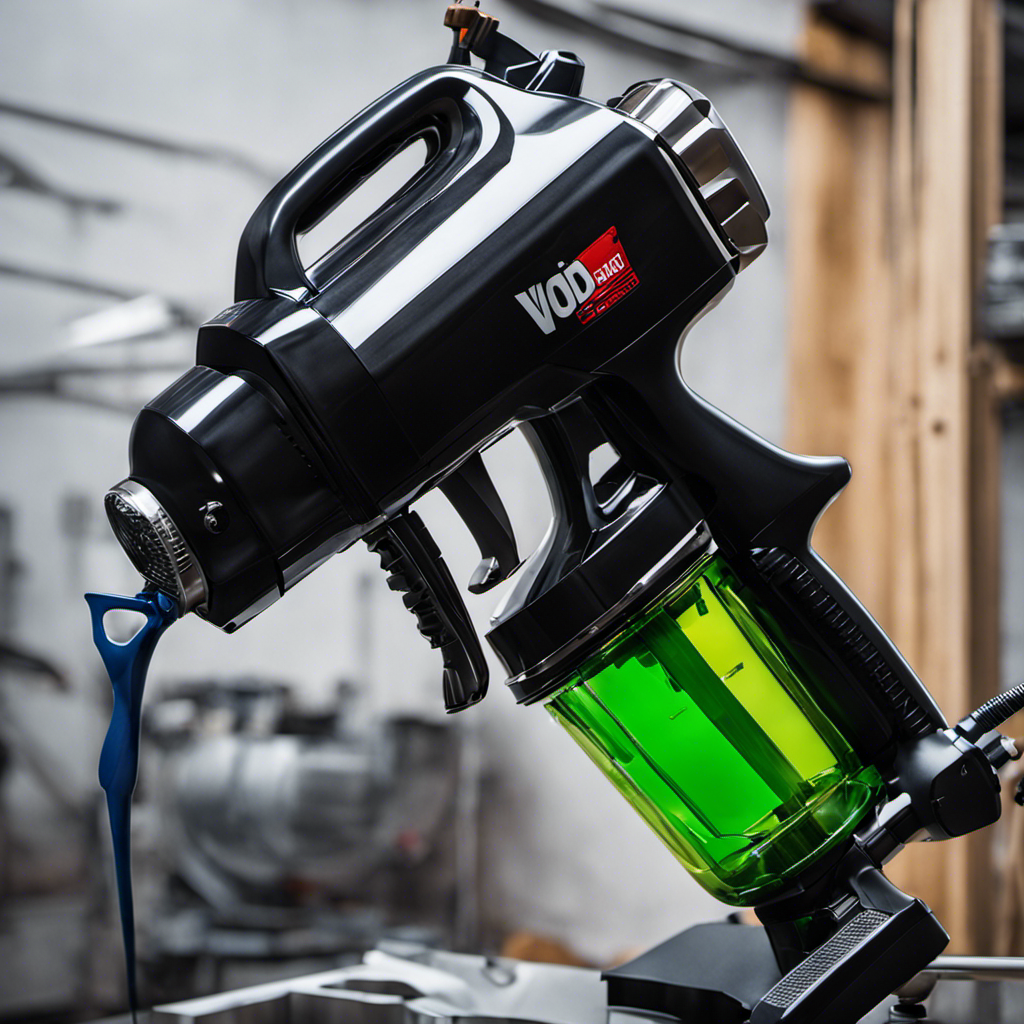
An airless paint sprayer, when used by an individual, has the power to turn a plain surface into a work of art, similar to how a magician’s wand works its magic.
Have you ever wondered why it’s called an airless paint sprayer? In this article, I will unravel the mystery behind this powerful tool.
We will explore its history, how it works, key components, advantages, common applications, maintenance, troubleshooting, safety precautions, and even compare it to other painting techniques.
So, sit back and prepare to be amazed by the wonders of the airless paint sprayer.
Key Takeaways
- Airless paint sprayers were designed to overcome the limitations of traditional paintbrushes and rollers.
- They revolutionized the painting industry by increasing productivity and improving overall quality.
- Airless sprayers rely on high pressure to force paint through a small orifice, eliminating the need for compressed air.
- Airless sprayers offer faster application, smoother finish, reduced overspray, and versatility in various projects.
History of Airless Paint Sprayers
The history of airless paint sprayers dates back to the early 20th century. These innovative tools have evolved significantly over time, revolutionizing the painting industry.
Airless paint sprayers were initially designed to overcome the limitations of traditional paintbrushes and rollers, offering a more efficient and time-saving method of applying paint. The introduction of airless paint sprayers had a profound impact on the painting industry, allowing for faster completion of projects with a more consistent and even finish.
The technology behind these sprayers involves pressurizing paint, which is then forced through a small nozzle, creating a fine mist of paint particles. This transitioned the industry from manually applying paint to using a mechanized system that increased productivity and improved overall quality.
Understanding how airless paint sprayers work is key to maximizing their benefits.
How Airless Paint Sprayers Work
To understand how airless paint sprayers work, it’s important to know the basic components involved.
Airless paint sprayers are highly efficient tools that offer numerous benefits and advantages. Unlike traditional paint sprayers that use compressed air to atomize the paint, airless sprayers rely on high pressure to force the paint through a small orifice, creating a fine mist of paint particles.
This method allows for a faster and more even application, resulting in a smooth and professional finish. One of the main advantages of using airless sprayers is their ability to cover large areas quickly, making them ideal for both commercial and residential projects.
Additionally, airless sprayers are versatile and can be used with a wide range of coatings, including latex, enamels, stains, and lacquers.
Now, let’s explore the key components of an airless paint sprayer.
Key Components of an Airless Paint Sprayer
When using an airless paint sprayer, you’ll find that the key components are the motor, the pump, the hose, and the spray gun. These components work together to provide the functionality of the sprayer.
The motor powers the pump, which pressurizes the paint.
The pump draws the paint from the container and pushes it through the hose.
The hose carries the pressurized paint to the spray gun.
The spray gun controls the flow and pattern of the paint, allowing for precise application.
The nozzle at the end of the spray gun atomizes the paint into fine droplets for a smooth finish.
Understanding these components is crucial for using an airless paint sprayer effectively.
Now, let’s explore the advantages of using an airless paint sprayer.
Advantages of Using an Airless Paint Sprayer
If you want a faster and more efficient way to apply paint, you should consider using an airless paint sprayer.
The advantages and benefits of using an airless paint sprayer are numerous. Firstly, it allows for a much faster application of paint compared to traditional methods. The high pressure produced by the sprayer ensures that the paint is evenly distributed and covers a larger area in less time.
Additionally, airless paint sprayers can handle a wide range of coatings, including thick and textured paints, which can be difficult to apply with brushes or rollers. Moreover, using an airless paint sprayer results in a smoother finish with no brush marks or roller lines. It also reduces overspray, minimizing wastage and saving on paint costs.
In the subsequent section, we will explore the common applications of airless paint sprayers.
Common Applications of Airless Paint Sprayers
The most common applications for airless paint sprayers are in large-scale commercial projects. These powerful machines are capable of spraying paint at high pressure, making them ideal for covering large areas quickly and efficiently.
Some of the common applications of airless paint sprayers include:
-
Painting furniture: Airless paint sprayers are perfect for painting furniture as they can evenly coat surfaces, even those with intricate designs or hard-to-reach areas.
-
Exterior house painting: When it comes to painting the exterior of a house, airless paint sprayers are the go-to choice. They can easily cover large surfaces like walls and roofs in a short amount of time.
-
Industrial painting: Airless paint sprayers are commonly used in industrial settings for painting large machinery, equipment, or structures.
-
Commercial painting: Whether it’s painting a shopping center, office building, or warehouse, airless paint sprayers are highly efficient for commercial painting projects.
-
Automotive painting: Airless paint sprayers can provide a smooth and professional finish when painting vehicles, making them a popular choice in the automotive industry.
When it comes to choosing the right airless paint sprayer for your project, there are several factors to consider.
Choosing the Right Airless Paint Sprayer for Your Project
When it comes to choosing the right airless paint sprayer for your project, it’s important to understand the different types available. Each type has its own features and capabilities, making them suitable for specific applications. To help you make an informed decision, here is a table outlining the different types of airless paint sprayers and their recommended uses:
| Type | Recommended Use |
|---|---|
| Airless Piston Pump | Ideal for large projects |
| Airless Diaphragm | Great for spraying thick coatings |
| Airless High Volume | Perfect for high-speed coverage |
| Airless Low Volume | Suitable for detailed work |
| Airless HVLP | Provides a fine finish |
Tips for Properly Using an Airless Paint Sprayer
When it comes to using an airless paint sprayer, there are several painting technique tips that can help you achieve a smooth and even finish.
It’s important to avoid common mistakes such as spraying too close or too far from the surface, as this can result in uneven coverage or overspray.
Additionally, proper cleaning and maintenance of the sprayer is essential to ensure its longevity and optimal performance.
Painting Technique Tips
To achieve a smooth finish, try adjusting the nozzle of your airless paint sprayer for a more controlled spray pattern. This technique can significantly improve the overall quality of your painting job.
Here are some additional painting technique tips to help you achieve professional results:
- Maintain a consistent distance between the sprayer and the surface being painted.
- Apply the paint using overlapping strokes to ensure even coverage.
- Keep the sprayer moving at a steady pace to avoid pooling or uneven application.
- Start and stop the sprayer off the surface to prevent drips or excessive buildup.
- Practice on a scrap surface to get a feel for the sprayer and adjust your technique accordingly.
By following these painting technique tips, you can enhance your painting preparation and increase your chances of achieving a smooth finish.
Now, let’s move on to common mistakes to avoid when using an airless paint sprayer.
Common Mistakes to Avoid
If you don’t maintain a consistent distance, you may end up with uneven coverage when using an airless paint sprayer. One of the most common mistakes people make is holding the sprayer too close to the surface being painted. This can result in excessive paint buildup and an uneven finish. On the other hand, holding the sprayer too far away can lead to overspray and wasted paint.
To achieve the best results, it is important to follow some best practices. First, ensure that you are holding the sprayer at the recommended distance from the surface, which is usually around 12 inches. Second, move the sprayer in a smooth and controlled motion, overlapping each pass by about 50% to ensure even coverage.
Now that you know how to avoid common mistakes, let’s move on to cleaning and maintenance tips for your airless paint sprayer.
Cleaning and Maintenance Tips
Properly maintaining your airless paint sprayer is essential for its longevity and optimal performance. Here are some cleaning techniques and the best cleaning products to keep your sprayer in top shape:
- Use a solvent or cleaning solution recommended by the manufacturer to clean the pump, hoses, and gun.
- Flush the system with clean water or solvent after each use to prevent paint residue buildup.
- Clean the filters regularly to ensure proper paint flow and prevent clogs.
- Inspect the spray tip for any blockages or wear and replace if necessary.
- Store your sprayer in a clean and dry environment to prevent damage and corrosion.
By following these cleaning techniques and using the best cleaning products, you can ensure that your airless paint sprayer stays in excellent condition.
In the next section, we will explore the maintenance and cleaning of airless paint sprayers in more detail.
Maintenance and Cleaning of Airless Paint Sprayers
When it comes to maintaining and cleaning an airless paint sprayer, there are a few key points to keep in mind.
Proper nozzle maintenance is essential for ensuring a smooth and consistent spray pattern.
It’s also important to use the right cleaning solution for your specific sprayer, as using the wrong product can damage the equipment.
Lastly, taking preventative measures to avoid clogs and blockages will help keep your sprayer running efficiently and extend its lifespan.
Proper Nozzle Maintenance
To maintain your paint sprayer’s nozzle, you need to regularly clean it and replace any worn-out parts. Proper nozzle care is crucial for achieving optimal spray patterns and preventing clogs or uneven spraying. Here are some troubleshooting tips to ensure your nozzle stays in top shape:
-
Check for debris: Before and after each use, inspect the nozzle for any paint or debris buildup. Clean it thoroughly with a soft brush or a nozzle cleaning tool.
-
Clear clogs: If the nozzle is clogged, remove it and soak it in a cleaning solution or use a nozzle cleaning needle to unclog it gently.
-
Replace worn-out parts: Over time, the nozzle tip and seal may wear out. Replace them as needed to maintain consistent spray performance.
-
Use the correct nozzle size: Different projects require different nozzle sizes. Make sure to use the appropriate size for the type of paint and desired finish.
-
Store properly: After cleaning, store the nozzle in a clean, dry place to prevent damage.
Now, let’s move on to cleaning solution recommendations for your paint sprayer.
Cleaning Solution Recommendations
You can use a mixture of vinegar and water as a cleaning solution for your nozzle. This cleaning solution is not only effective but also eco-friendly. Vinegar is a natural disinfectant and can help remove any paint residue or buildup from the nozzle.
Simply mix equal parts vinegar and water in a container and soak the nozzle for about 30 minutes. After that, gently scrub the nozzle with a brush to remove any remaining paint particles. Rinse it thoroughly with clean water and let it dry before reattaching it to your airless paint sprayer.
Preventing Clogs and Blockages
To prevent clogs and blockages when using an airless paint sprayer, there are a few important steps to follow.
First, make sure to choose the right paint for your sprayer. Using a paint that is too thick or contains particles can lead to clogs. Additionally, it is crucial to properly thin the paint according to the manufacturer’s instructions. This will help the paint flow smoothly through the sprayer without causing blockages.
Another tip is to regularly clean the filters and nozzles of your sprayer to remove any debris or dried paint that could cause clogs. Finally, using a tip with the correct size for your project can help prevent overspray and ensure a more even application.
Now, let’s move on to troubleshooting common issues with airless paint sprayers…
Troubleshooting Common Issues With Airless Paint Sprayers
If your airless paint sprayer is experiencing common issues, troubleshooting can help identify and resolve the problem. Here are some troubleshooting tips for airless paint sprayers.
First, check the power source and make sure it is properly connected. If the sprayer is not turning on, check the fuse or circuit breaker.
Next, inspect the spray tip for any clogs or blockages. Clean the tip if necessary. Also, check the paint filter and ensure it is clean and free from debris.
If the sprayer is not priming, check the suction tube for any obstructions.
Lastly, make sure the paint is properly mixed and thinned according to the manufacturer’s instructions.
By following these troubleshooting steps, you can quickly identify and resolve common issues with your airless paint sprayer.
Now, let’s move on to discussing safety precautions when using an airless paint sprayer.
Safety Precautions When Using an Airless Paint Sprayer
When using an airless paint sprayer, it’s important to follow safety precautions to protect yourself and others. Here are some precautions to keep in mind:
-
Wear protective gear: Always wear safety glasses, gloves, and a respirator to prevent any paint or fumes from coming into contact with your eyes, skin, or lungs.
-
Ventilate the area: Make sure the painting area is well-ventilated to minimize the inhalation of paint fumes.
-
Secure the work area: Clear the area of any potential hazards, such as tripping hazards or flammable materials, to ensure a safe working environment.
-
Proper equipment handling: Familiarize yourself with the operating instructions of the airless paint sprayer and handle the equipment with care to prevent accidents.
-
Clean up properly: After completing your painting project, clean the sprayer thoroughly and dispose of any paint or solvents in accordance with local regulations.
By following these precautions and handling the equipment responsibly, you can ensure a safe and successful painting experience.
Now, let’s explore how airless paint sprayers compare to other painting techniques.
Comparing Airless Paint Sprayers to Other Painting Techniques
Comparing airless paint sprayers to other painting techniques, there are several factors to consider.
Airless sprayers offer numerous benefits that make them a popular choice among painters. Firstly, they provide a faster and more efficient way of painting large surfaces. The high-pressure system of airless sprayers enables them to cover a larger area in less time compared to traditional methods like brushes or rollers.
Additionally, airless sprayers offer a more even and consistent finish, avoiding brush marks or roller lines. They also allow for greater control over the application of paint, with adjustable pressure settings that can be tailored to different surfaces and materials.
Moreover, airless sprayers can handle thicker coatings, such as latex or enamel, making them versatile for various painting projects.
Overall, the benefits of airless sprayers make them a valuable tool for professional painters.
Frequently Asked Questions
What Are Some Alternative Painting Techniques to Using an Airless Paint Sprayer?
Some alternative painting techniques to using an airless paint sprayer include sponge painting and stenciling. These methods can create unique textures and patterns on surfaces, allowing for creativity and personalization in your painting projects.
Are There Any Safety Precautions Specific to Using an Airless Paint Sprayer?
When using an airless paint sprayer, it’s crucial to follow safety precautions. Properly ventilate the area, wear protective gear, and keep a safe distance from the spray. These measures ensure a smooth and accident-free painting experience.
How Do You Choose the Right Airless Paint Sprayer for a Specific Project?
When choosing the right airless paint sprayer for a specific project, there are several factors to consider. It’s important to think about the size and type of the project, the type of paint being used, and the desired finish.
What Are Some Common Issues That Can Occur When Using an Airless Paint Sprayer?
When using an airless paint sprayer, common issues can arise. However, with proper troubleshooting techniques, these problems can be easily resolved. Let me share some of the most common issues and how to fix them.
How Do You Properly Clean and Maintain an Airless Paint Sprayer?
To properly clean and maintain an airless paint sprayer, start by flushing out any leftover paint and cleaning the filters. Regularly check for clogs and wear, and replace any worn parts. Following these tips will help prolong the lifespan of your sprayer.
Conclusion
In conclusion, airless paint sprayers are a practical and efficient solution for painting projects. With their high-pressure technology, they provide a smooth and even finish, saving both time and paint.
An interesting statistic to note is that airless paint sprayers can cover up to 10 times more surface area compared to traditional paintbrushes or rollers. So, if you’re looking to tackle a large painting job, investing in an airless paint sprayer can greatly increase your productivity.
Drenched in creativity and armed with a fountain pen, Isolde weaves words as gracefully as a painter strokes their canvas. A writer for Paint Sprayer Zone, her passion for colors, textures, and spaces finds a harmonious blend with her profound knowledge of painting tools and techniques.
Having grown up in a family of artists, Isolde’s tryst with paints began early. While her relatives expressed themselves on canvas, Isolde found her medium in words. She dedicated herself to chronicling the world of painting, understanding the nuances of each tool, and the artistry behind every spritz of a paint sprayer.
-
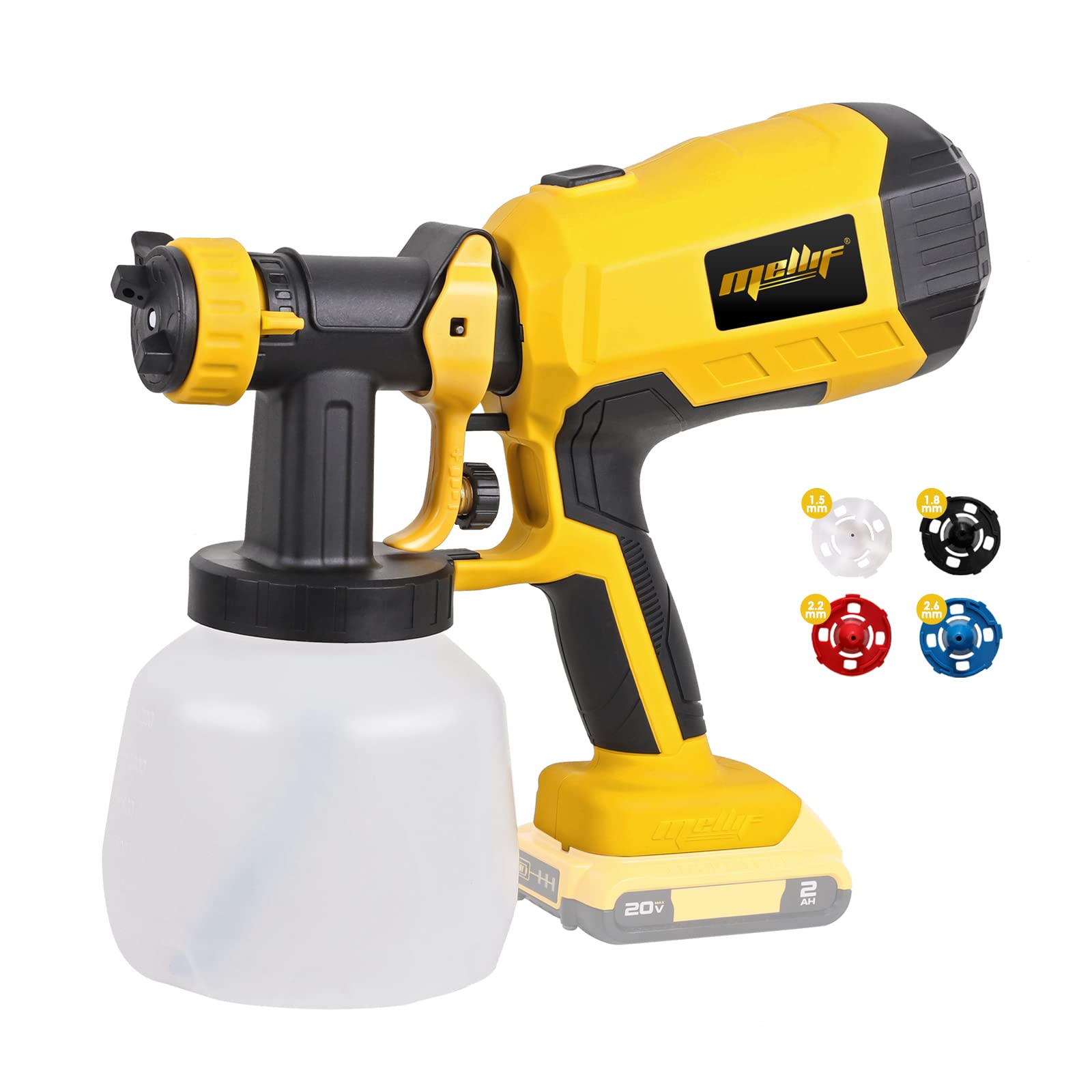
 Paint Sprayer Reviews & Buying Guides3 months ago
Paint Sprayer Reviews & Buying Guides3 months agoDEWALT 20V Cordless Paint Sprayer Review (2023)
-
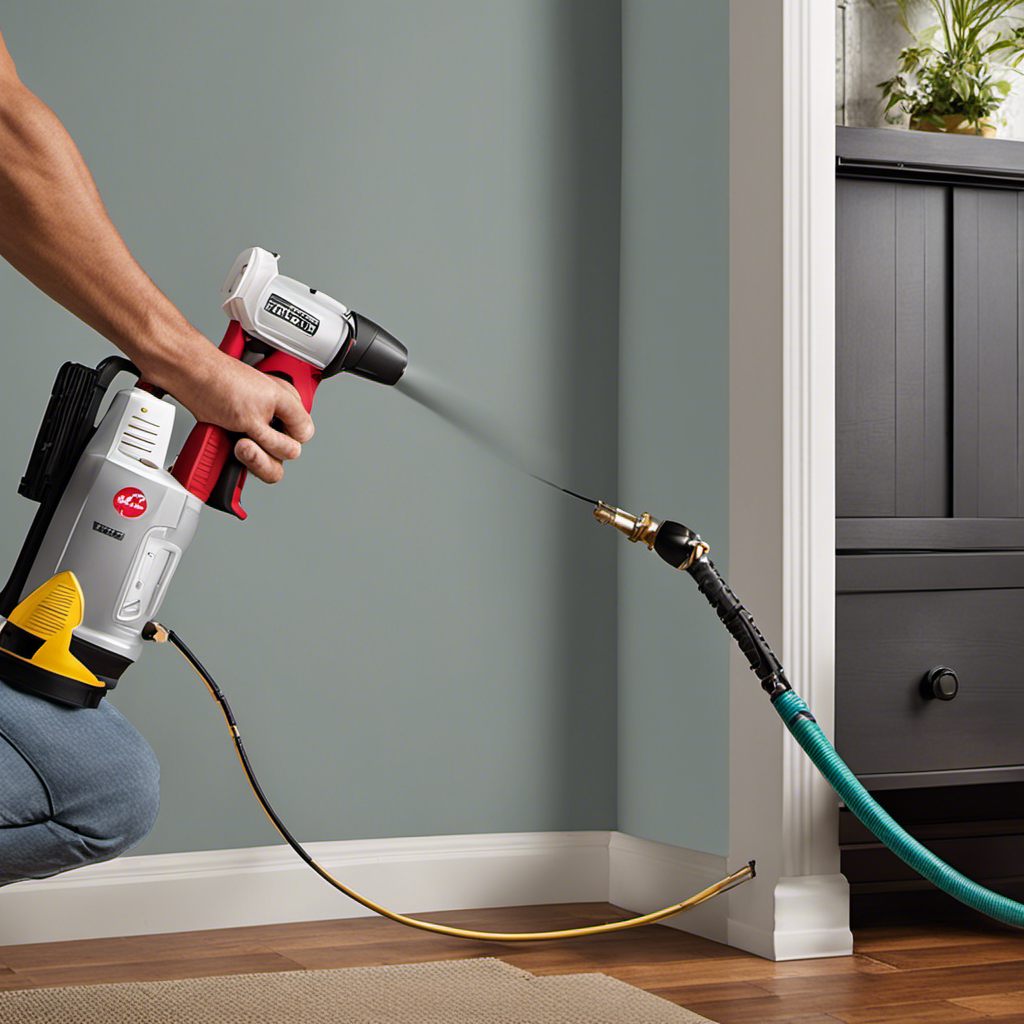
 Paint Sprayer Reviews & Buying Guides3 months ago
Paint Sprayer Reviews & Buying Guides3 months agoCalculating Paint Needs for Airless Sprayer: Coverage, Surfaces, and Tips (2023)
-
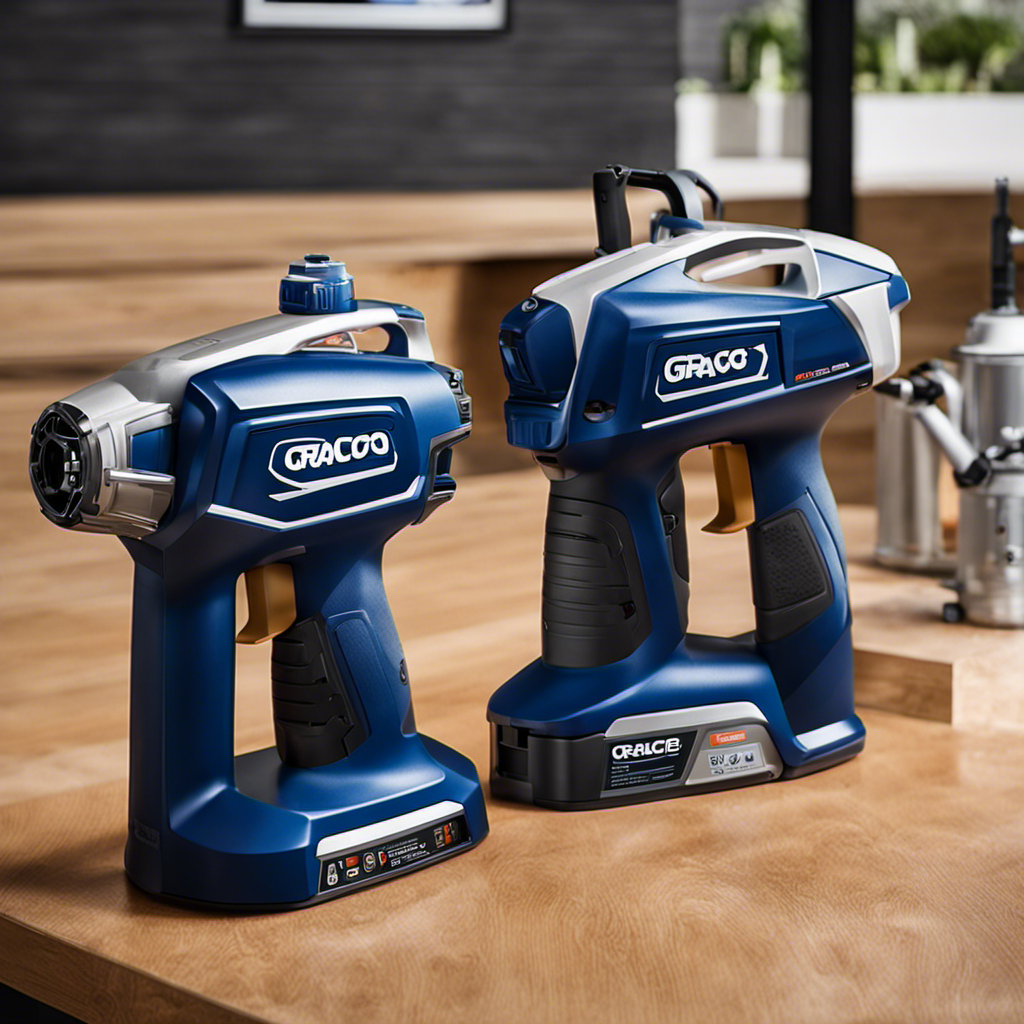
 Paint Sprayer Reviews & Buying Guides3 months ago
Paint Sprayer Reviews & Buying Guides3 months agoGraco Truecoat 360: DSP Vs VSP – a Comparison of Power and Portability (2023)
-
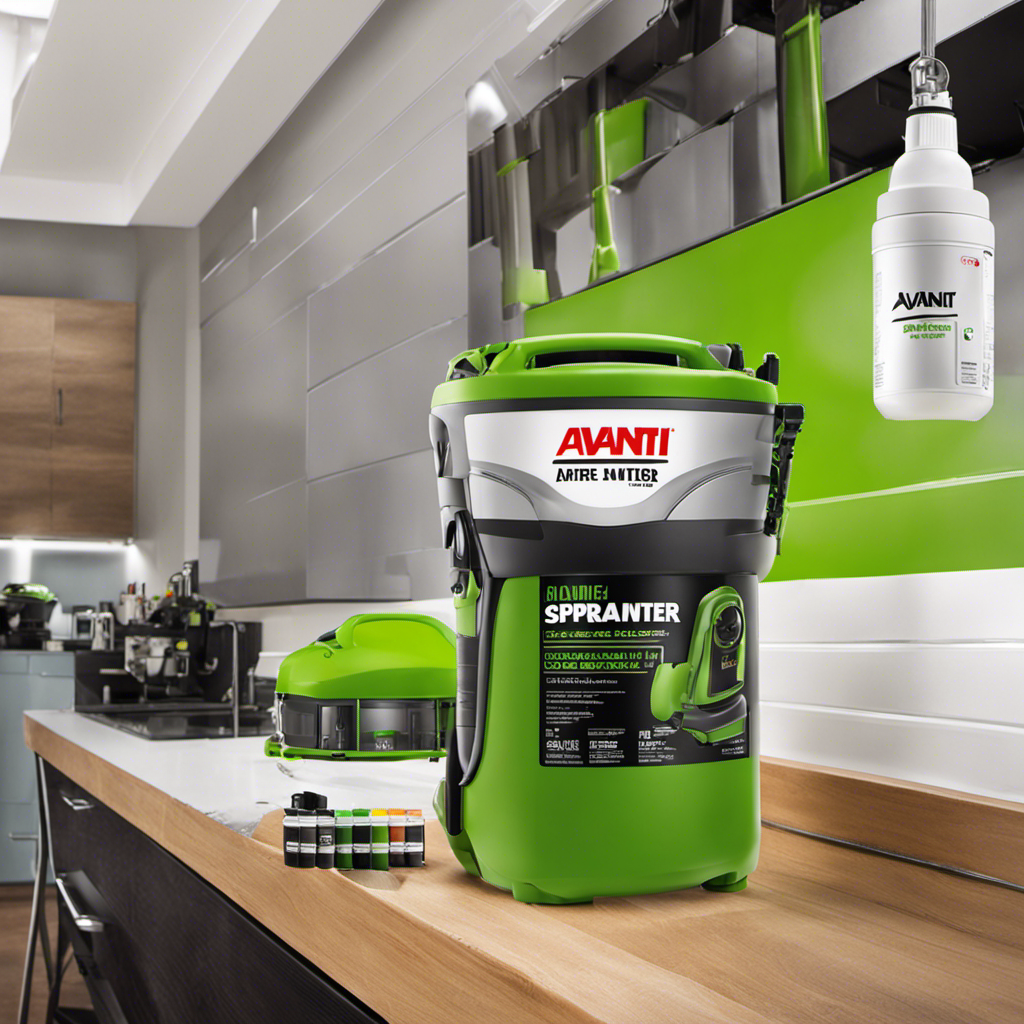
 How-To & Tips3 months ago
How-To & Tips3 months agoMastering the Avanti Airless Paint Sprayer: Tips and Techniques
-
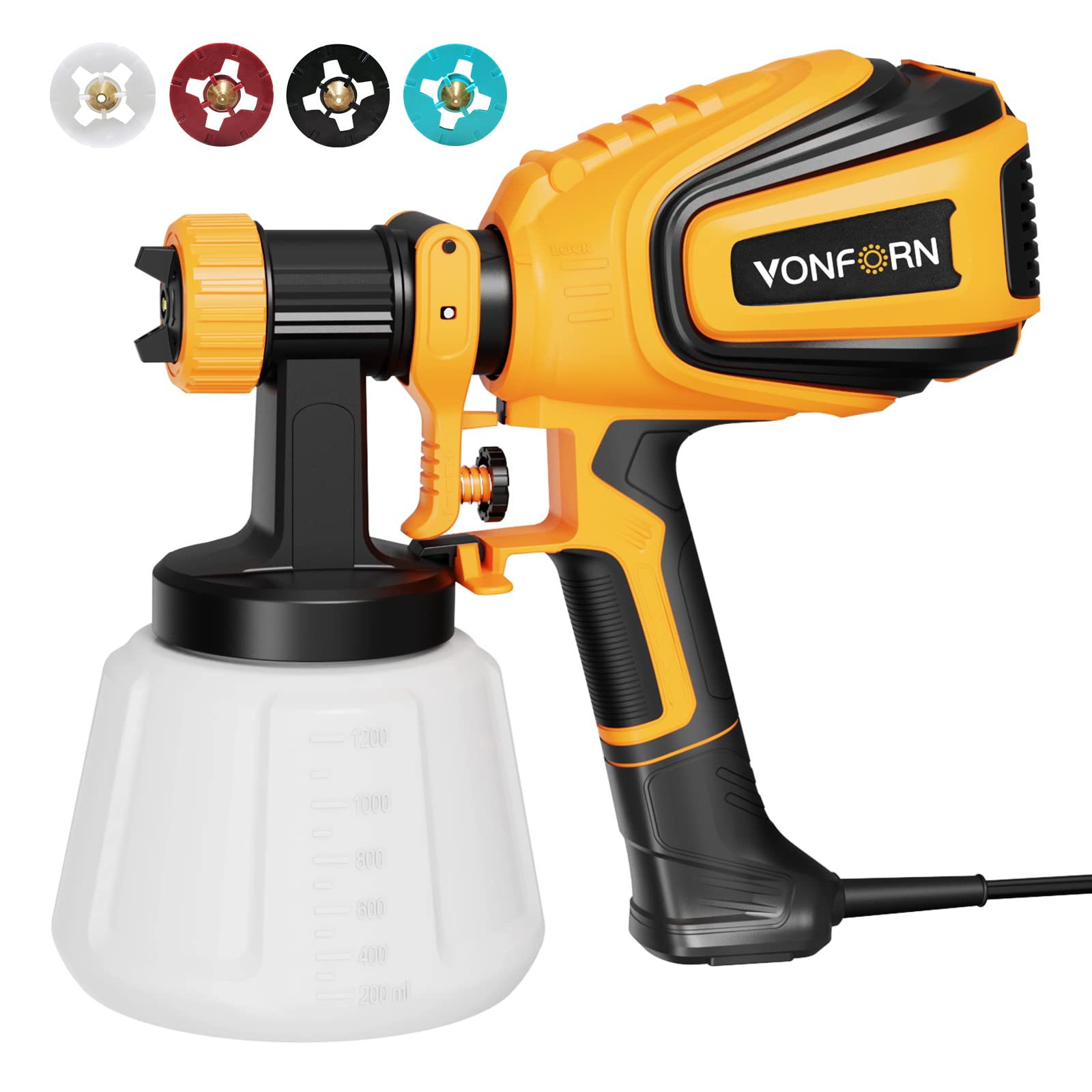
 Paint Sprayer Reviews & Buying Guides3 months ago
Paint Sprayer Reviews & Buying Guides3 months agoVONFORN Paint Sprayer Review: High Performance HVLP Spray Gun (2023)
-

 Paint Sprayer Reviews & Buying Guides3 months ago
Paint Sprayer Reviews & Buying Guides3 months agoSpray Painting Hazards: Safety Measures and Compliance (2023)
-
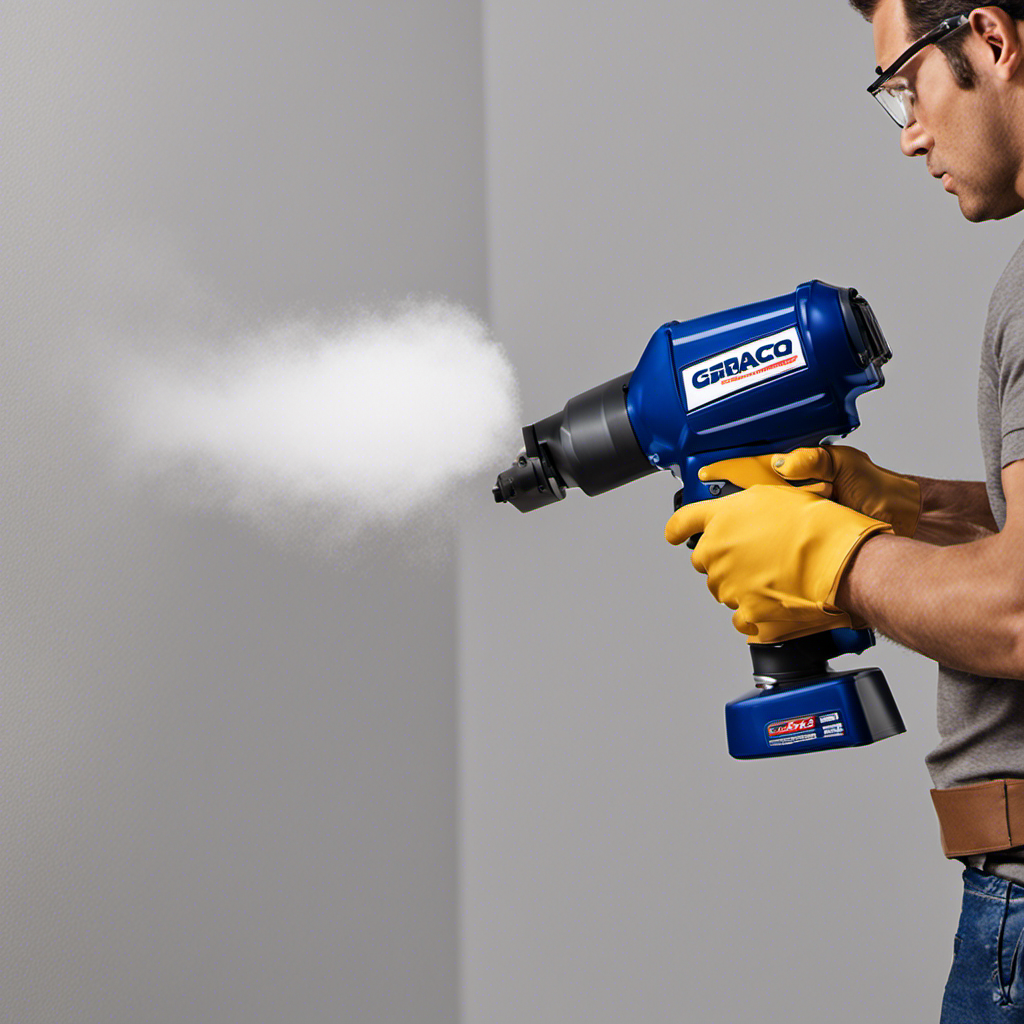
 How-To & Tips3 months ago
How-To & Tips3 months agoMastering the Graco Magnum X7: A Professional Paint Sprayer Guide
-
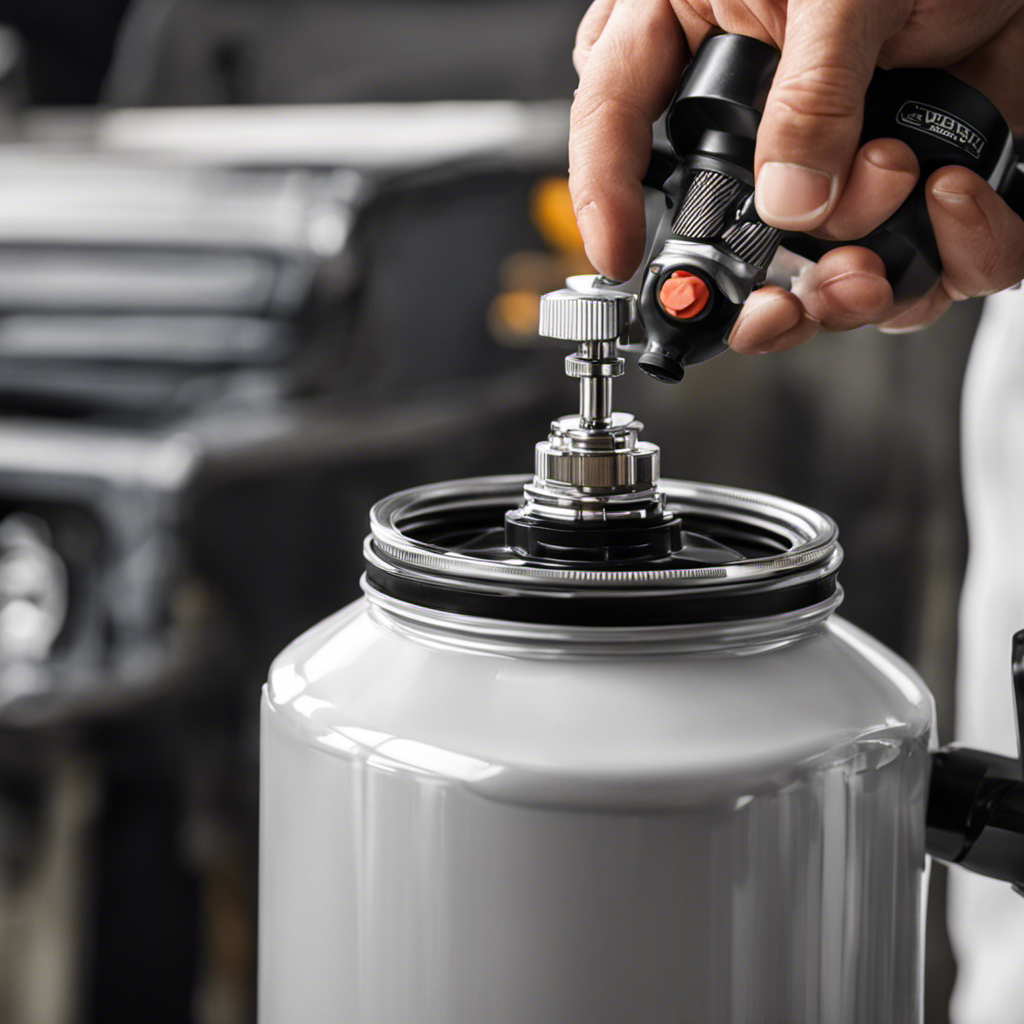
 Paint Sprayers FAQs3 months ago
Paint Sprayers FAQs3 months agoHow to Adjust Pressure on Airless Paint Sprayer
